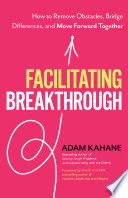

Facilitation is a critical skill that can drive innovation and collaboration within teams. The book emphasizes that effective facilitation helps unlock the potential of individuals and groups, allowing them to navigate complex challenges. By guiding discussions, fostering an inclusive environment, and encouraging diverse perspectives, facilitators can create a space where breakthrough ideas can emerge. The authors suggest that facilitation is not just about managing meetings; it is about creating an atmosphere where creativity flourishes and participants feel empowered to contribute. This idea is vital because it highlights the role of the facilitator as a catalyst for change, enabling teams to harness their collective intelligence.
Continue readingThe book discusses the importance of establishing a safe space for innovation, where team members feel comfortable expressing their ideas without fear of judgment. This involves setting clear ground rules, encouraging open communication, and actively listening to all voices in the room. By fostering psychological safety, facilitators can help participants take risks and explore unconventional solutions. The authors provide strategies for building this safe environment, such as using icebreakers, acknowledging contributions, and addressing conflicts constructively. This concept is crucial as it lays the foundation for a collaborative culture where breakthrough thinking can thrive.
Continue readingOne of the key insights from the book is that diversity of thought is essential for innovation. The authors argue that teams composed of individuals with varied backgrounds, experiences, and viewpoints are more likely to generate creative solutions. The book encourages facilitators to actively seek out diverse participants and to create a structure that allows for equitable participation. Techniques such as brainstorming, affinity mapping, and role-playing are suggested to draw out different perspectives. This idea underscores the value of inclusivity in the innovation process and highlights how diverse teams can lead to more effective problem-solving.
Continue readingThe authors emphasize the power of questioning as a facilitation tool. Thoughtful questions can provoke deeper thinking, challenge assumptions, and inspire new ideas. The book outlines various types of questions—open-ended, probing, and clarifying—that facilitators can use to guide discussions. It also discusses the importance of timing and context when asking questions to maximize their impact. This idea is significant because it positions facilitators as not just leaders but as enablers of dialogue, where the right questions can lead to transformative insights and breakthroughs.
Continue readingThe book introduces design thinking as a valuable framework for facilitating breakthroughs. Design thinking emphasizes empathy, ideation, prototyping, and testing, making it a powerful approach for problem-solving. The authors explain how facilitators can integrate design thinking principles into their sessions to encourage creativity and user-centered solutions. By focusing on understanding the needs of end-users, teams can develop innovative products and services that resonate with their audience. This idea is particularly relevant in today’s fast-paced environment, where understanding customer needs is crucial for success.
Continue readingTo ensure that facilitation efforts lead to tangible outcomes, the book stresses the importance of measuring success and impact. The authors suggest establishing clear objectives at the outset of any facilitation process and using metrics to assess progress. This could involve qualitative feedback from participants, quantitative data on outcomes, or both. By evaluating the effectiveness of facilitation sessions, facilitators can refine their approaches and demonstrate the value of their work. This idea is important as it promotes accountability and continuous improvement within teams.
Continue readingThe book explores the role of facilitation in change management, highlighting how facilitators can guide teams through transitions and help them adapt to new circumstances. The authors discuss strategies for addressing resistance to change, fostering engagement, and building a shared vision. By facilitating dialogue around change, facilitators can help teams navigate uncertainty and maintain morale. This idea is crucial in today’s dynamic business environment, where organizations must frequently adapt to remain competitive.
Continue reading